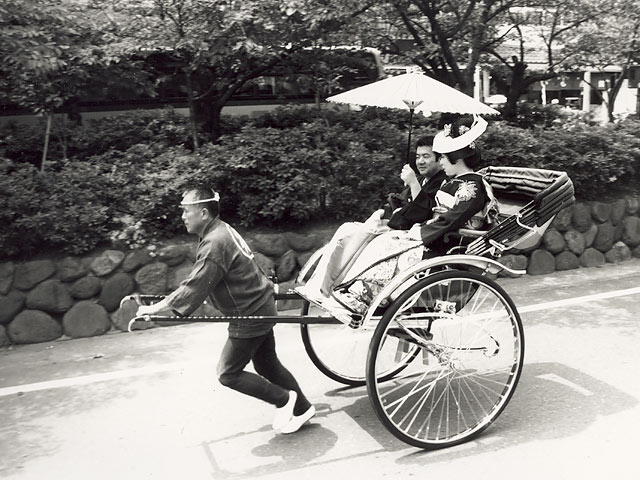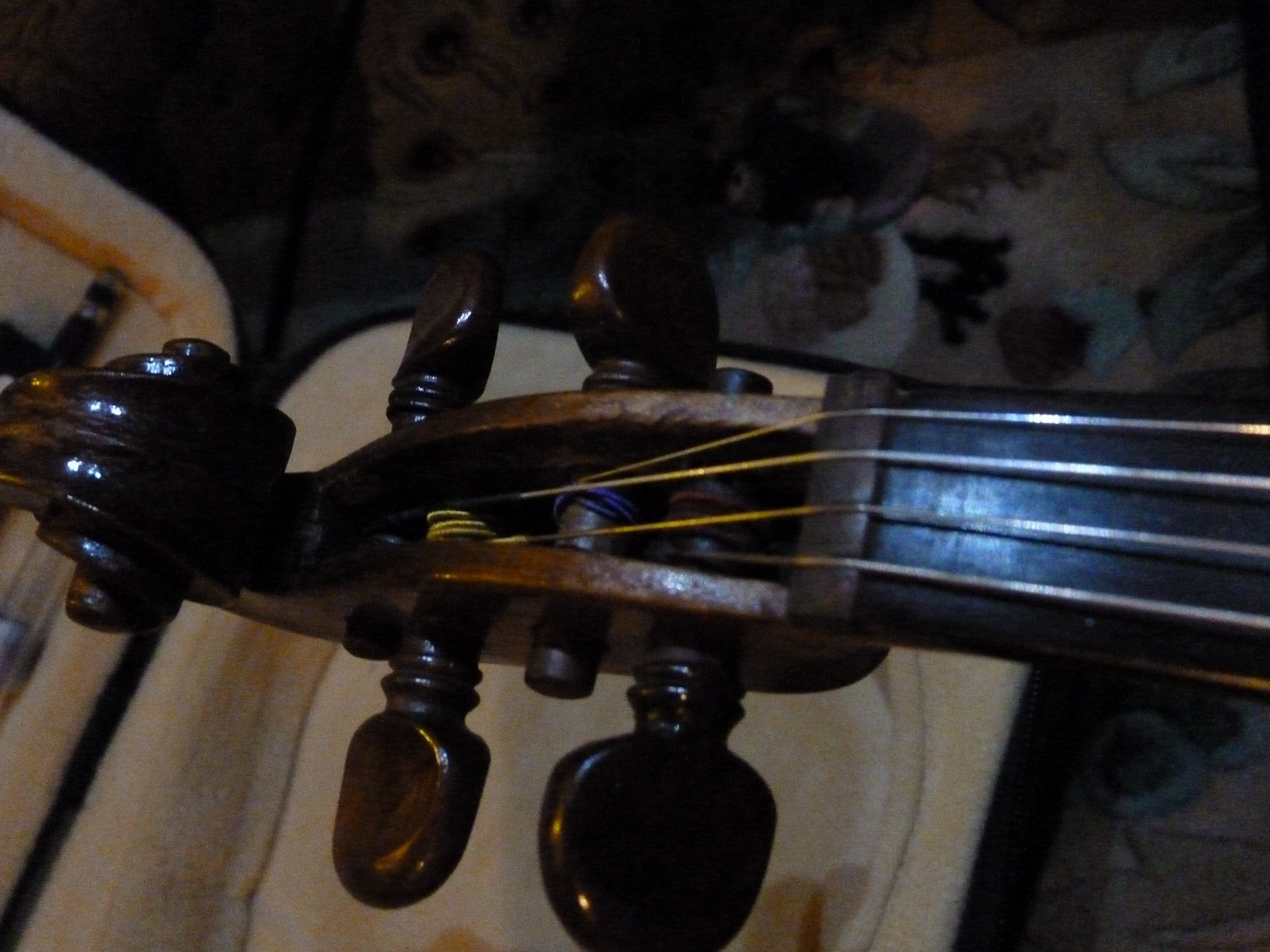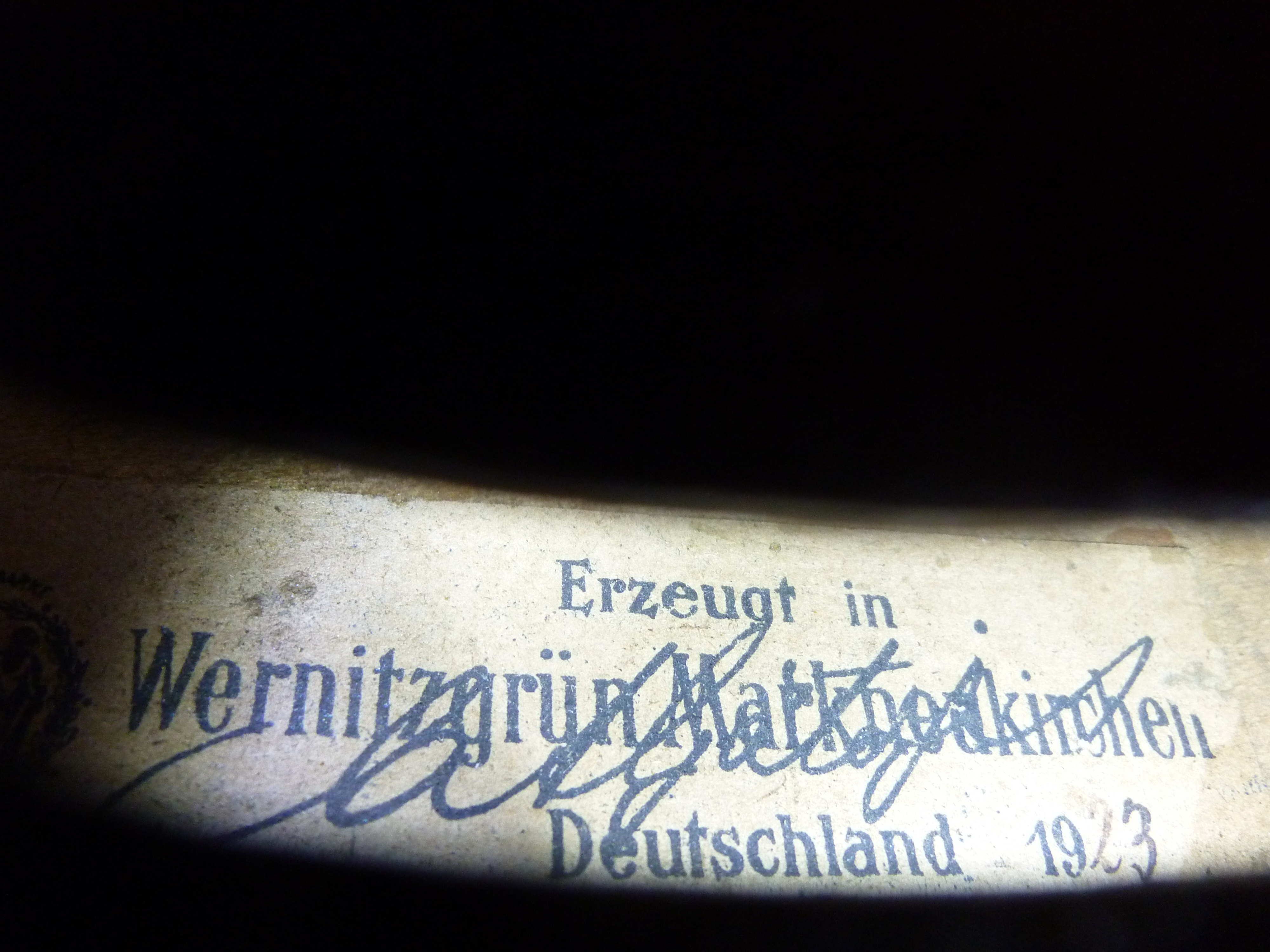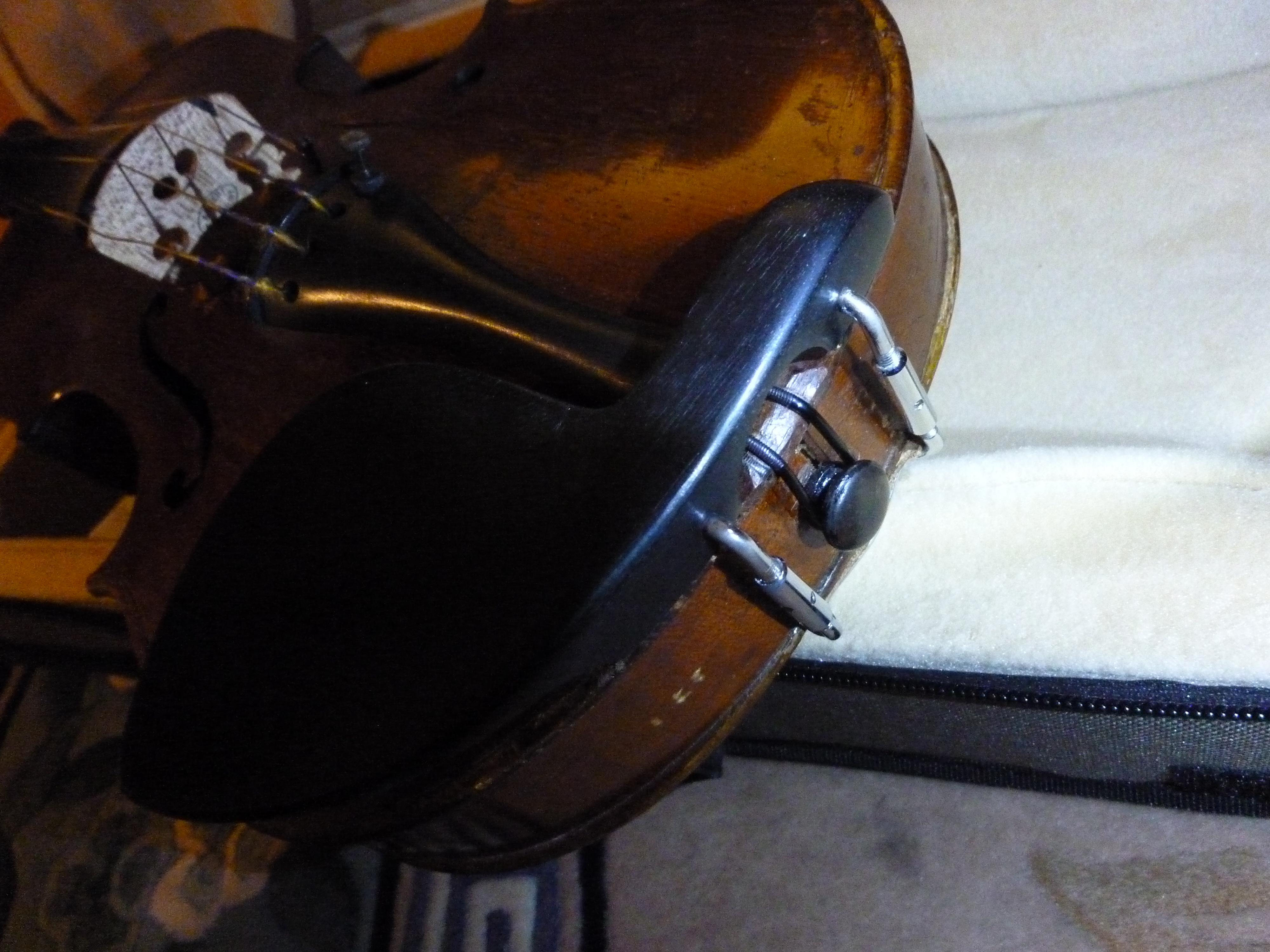Violins are delicate instruments that need good maintenance and repairs from skillful luthiers. In my childhood, my father bought a violin that was stored in a warehouse for decades. The body was separated due to the high humidity and it was without strings, bridge and the pegs.
The label shows it maybe an antique violin (see the figure on the left). My father had the violin repaired by my violin teacher’s friend. My teacher played it in his symphony orchestra. The conductor joked that the violin sounded like the voice of a “rickshaw” man…….

…..It sounded so loud and coarse that made the ladies (the other violins in the orchestra) to run away!
This “antique” violin accompanied me to the States. I played it with Mrs. Foster, the Graduate School Dean’s wife and a violinist in Toledo Symphony Orchestra. She had my violin repaired by her friend in the orchestra. It sounded better than before the repair but it was still sounded rough.
Recently, Esther in our chamber group introduced me to Mr. Chiou, an engineer, as well as an amateur violinist and violin luthiers who was travelling from Northern California. He looked and played the violin. He told us this is a good violin but needs some adjustments.
 He did not bring his tools with him and with the tools on the spot, he cut and lowered the joint piece connecting the Fingerboard and the “Peg box”. Then he removed the Tuners on the A, D and G strings. He shortened the wire to bring the Tailpiece closer to the End Button. He moved the Chin Rest closer to the edge of the Top (Belly).
He did not bring his tools with him and with the tools on the spot, he cut and lowered the joint piece connecting the Fingerboard and the “Peg box”. Then he removed the Tuners on the A, D and G strings. He shortened the wire to bring the Tailpiece closer to the End Button. He moved the Chin Rest closer to the edge of the Top (Belly).
And surprisingly, he asked for rice grains. He poured the rice grains through the f-hole and shake the violin in all directions. Then, he poured the rice grains out. The grains were coated with dusts. He told us this is the best way to remove the dusts inside the violin. The dusts interfere with the resonance of the violin.
After all these works, the violin sounded almost like a different one. The sound is warm, delicate and sweet, a total transformation from the coarse voice before. Mr. Chiou told me that he will work on the Bridge and other adjustment when he comes next time. We, the guests in the room were so amazed of Mr. Chiou’s skills and his generosity. Finally he told me to replace the strings with Pirastro Evah Pirazzi strings.
I bought the Pirazzi strings and put them on my other violin, labelled “Joh. Bapt. Schweitzer, Hieronym Amati Pestini 1813” that I bought from Robert Cauer, a violin maker and dealer in Los Angeles. The strings sound more brilliant and bright than the “Zyex” or “Dominant” strings I had before. Peter, my violin friend told me that after using Pirazzi strings, he never came back to use others. I feel the same way so I am buying another set of Pirazzi strings for my “antique” violin.
I have learned that care of violins is not an easy task and it requires knowledge as well as good professional advice and helps.
References:
- Violin Owner’s Manual, content by James N. McKean, String Letter Publishing, Hal.Leonard, 2001
- Violin Repair Guide, Michael Atria, Hal.Leonard, 2004

